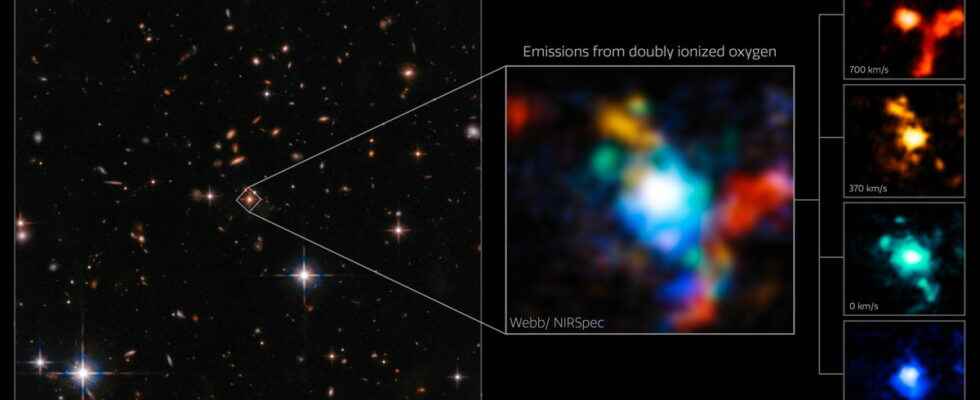The James Webb Telescope spoils us once again this week. After a beautiful shot of the pillars of creationit is the turn of a very special galactic cluster to shine.
An important shot for scientists who will be able to study the first moments of our universe.
As distant as it is colorful
Needless to repeat all the exploits achieved by James Webb since his commissioning. However, the space telescope once again manages to surprise us! So the ESA has just released a stunning image (see top of this article). With a view to studying the early universe, astronomers have used this formidable observatory to discover a cluster of galaxies like no other.
Named DSS J165202.64+172852.3 (we’ve seen more elegant), this extreme red quasar depicts an event that actually happened nearly 11.5 billion years ago. That is to say, only two billion years after the famous Big Bang. Recall that a quasar is a very luminous supermassive black hole which is at the heart of a cluster of galaxies in formation.
An exceptional discovery
As the ESA explains in its article, this quasar is among the most powerful ever observed at such a great distance. It is the NIRSpec tool which obtained this rendering by operating in the near infrared. Thanks to Webb, scientists can now “ go back in time in an effort to observe the events that unfolded at the advent of the universe.
Thus, it will be possible to learn a little more about the formation of the first galaxies and their evolution. The behavior of black holes and their influence on the structure of the universe could also be studied. In short, the telescope still has a lot to teach us!
Source : ESA

2